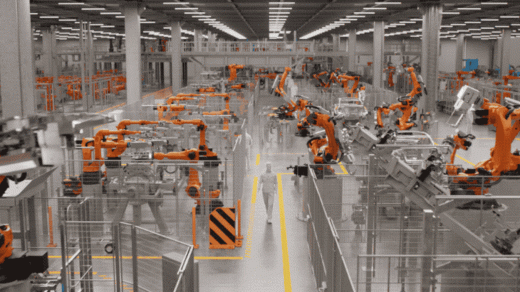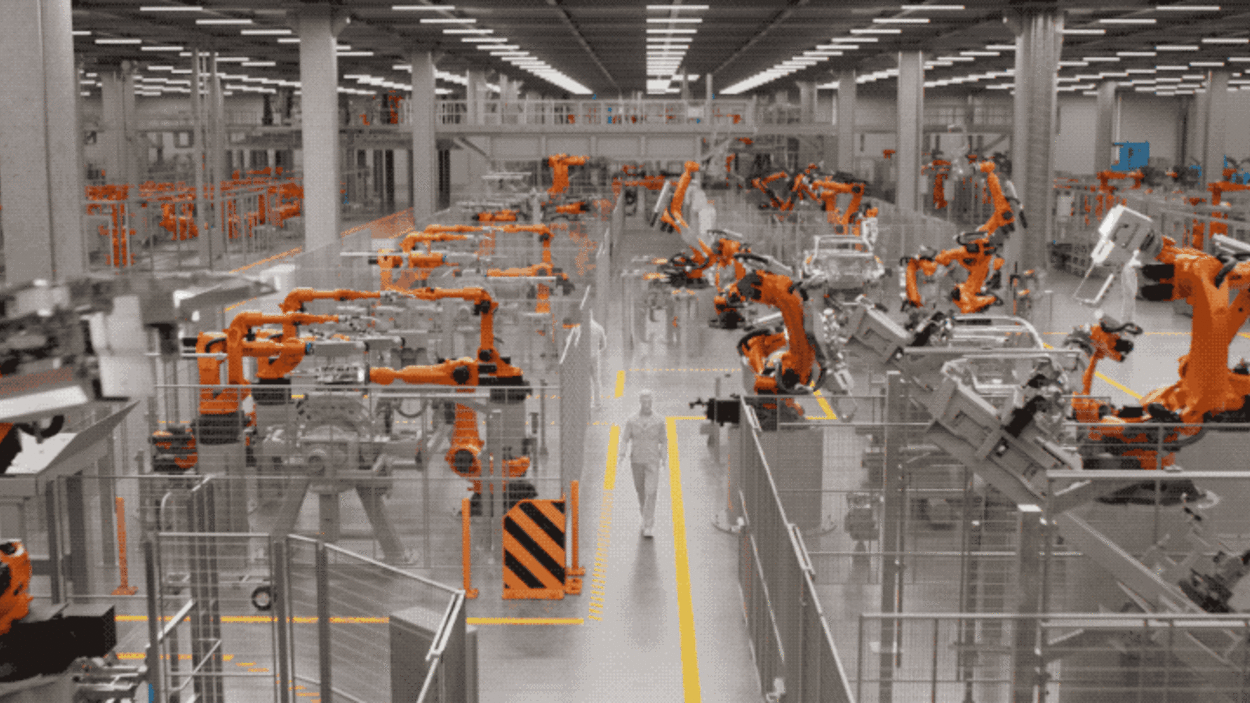BMW’s new factory doesn’t exist in real life, but it will still change the car industry
Building a car factory is one of the most complex and expensive design projects imaginable. The factory itself is a giant machine where thousands of human workers, robots, and thingamajigs must move in a perfectly choreographed ballet to turn 30,000 individual parts into one automobile, at a rate of one car per minute. Before construction on the factory begins, thousands of engineers draw millions of CAD drawings and meet for thousands of hours. Worse yet, they know that no amount of planning will prevent a long list of bugs once the factory finally opens, which can result in millions of dollars lost every day until the bugs are resolved.
At least, that’s how it used to work.
This is all about to change thanks to the world’s first virtual factory, a perfect digital twin of BMW’s future 400-hectare plant in Debrecen, Hungary, which will reportedly will produce around 150,000 vehicles every year when it opens in 2025.
Ross Krambergar and Rev Lebaredian explained exactly how this would work, during a recent video interview. Krambergar—who runs geometric simulations for virtual commissioning at BMW—has spent the past two years creating a fully digital version of the Hungary factory with Lebaredian, who is vice president of Omniverse and simulation technology at Nvidia. Nvidia, a Santa Clara-based company mostly known for making gaming graphic cards and creating AI technology magic, has been developing Omniverse for years. It’s a metaverse custom-designed for companies to plan and optimize industrial processes that can save them millions of dollars. In other words, it is the polar opposite of Mark Zuckerberg’s pointless playground for sad torsoless kids.
“One of the biggest problems that [industrial companies] have is that they don’t actually get to see whether their factory is going to work until they’ve built it,” Lebaredian says. By turning designs into something that can be simulated and run inside a computer, companies like BMW have an opportunity to test things digitally before actually creating them in the physical world. This means that they can save themselves a lot of headaches and money by detecting thousands of potential problems before laying down one brick.
More than a game
Omniverse is like an extremely complex video game that exists continuously in the cloud, much like Grand Theft Auto Online, but without the guns, the police chases, and the strippers. In the Omniverse, everything that exists in the real world has a 3D counterpart that acts exactly like its physical version. A robot is solid, has real joints, is affected by gravity, and can actually be programmed to do tasks. It can pick up a nut and bolt it to a car chassis, it can collide with a rack of tools, or, if it’s incorrectly placed, it might accidentally smash a human worker on the head.
BMW first explored digital twinning software when it partnered with Unreal Engine to build 3D factories a couple of years ago. “Before we met the Omniverse people, we were planning the Electric Mini factory in Oxford, England. One of the things we wanted to do was to try and visualize how all the different plans overlap,” Krambergar says. He explained that during planning, BMW has “design freezes,” a process in which everyone involved in a specific part of the factory gathers in a room to ensure each element of the process is working before moving onto the design and approval of another part of the factory. According to Krambergar, these conversations are nearly impossible to have without using 3D models.
Unreal Engine’s software wasn’t quite right for simulating a real world factory with billions of parameters at play. A game engine only requires developers to create 3D models in a program like Maya, paint some textures on them, set up the lighting, and then add some programming. To fully understand how a factory might behave, designers must use software programs that can precisely plan all the required elements, from electrical systems and robotics to tooling, logistics, and even human workflow analysis, which measures how a worker moves and where the tools and parts need to be in order to efficiently accomplish a task.
When BWM partnered with Nvidia, it found a partner capable of that complexity. Omniverse allows BMW to connect its complex design databases together into one gigantic database—a living factory in the cloud, if you will. This allows everyone to see in real time what’s going on with each other’s work. For example, if a tooling planner needs to place one extra tool somewhere in the assembly line, they can see where everything is, and everyone else can see where the new tool appears in the Omniverse virtual factory.
Krambergar says the results are nothing short of phenomenal when it comes to accelerating team work. He points out: “One of the planners told me that a design freeze that typically can take up to three days now only took one hour.” This happens because seeing everything happening in real time right on your web browser just makes everyone understand things intuitively (incidentally, BMW doesn’t use VR headsets, just web browsers where the 3D world gets streamed too from the cloud). The effect, Krambergar says, is that designers have a lot more time to meet deadlines comfortably, which leads to much less pressure and much better work.
Ironing out the kinks
The real-time visual interaction where everything is coordinated into a single model automatically leads to faster detection of potential problems, Lebaredian says. “All of the engineers can look into it as if they were in the actual physical place together, and they can intuitively see that things are conflicting and fix them right there.”
One recent example happened at the old BMW factory in Munich last year. Lebaredian explains that he went on a tour of the 100-year-old building. When he arrived at a section of the factory where massive robots weld behind a chain-link fence, he saw a metallic catwalk over them. He asked BMW employees how they made sure that the giant arms didn’t hit the bridge.
Getting an answer would have previously required the robots’ manufacturer to come to the factory, place the robots, and carefully test their programming with BMW engineers to ensure the robot arms didn’t hit the catwalk or anything else around it. That process could take days. Using Omniverse, BMW was able to place the robots inside the factory, make them run like the real thing, and immediately saw that they would have destroyed the catwalk if they had used the original welding program. To fix it, they modified the programming and, just like that, it saved them days of headaches: The robots were accurately installed and ready to run right away.
“Once you’re committed to putting [the robots] in the real world, it’s expensive and any delays or any problems there end up costing you millions and millions of dollars,” Lebaredian says. Krambergar says that it’s important to catch these factory design mishaps early because they are generally easy to fix. If you don’t catch them in the Omniverse, then you lose lots of money. “When we shut down for two weeks, that’s two weeks where we’re not earning any money whatsoever. And it’s two weeks where we cannot get that time back.” Every minute that they are not building a car, that’s the price of a car lost, he says, because the plants spit out one car about every minute.
The real test for Omniverse, however, is happening now with their new Hungarian plant, the first one that is being affected by a true digital twin. It will also be the first time where all teams at BMW will be able to use the digital twin after a long period of beta testing. In the coming months, BMW and Nvidia plan to keep adding new capabilities, like the simulations of actual human workers who work and roam the plant as their real-world counterparts would do.
Eventually, BMW’s digital twin factory will expand beyond its role of designing and testing factories before they come online. The goal is to create a simplified workflow where any change in the physical factory will update the virtual factory, and where any change in the virtual factory will update the 3D databases used by BMW’s design teams. Once they have all those layers in place, Lebaredian says the next frontier is integrating Omniverse with artificial intelligence that will help to optimize the physical world.
(19)



